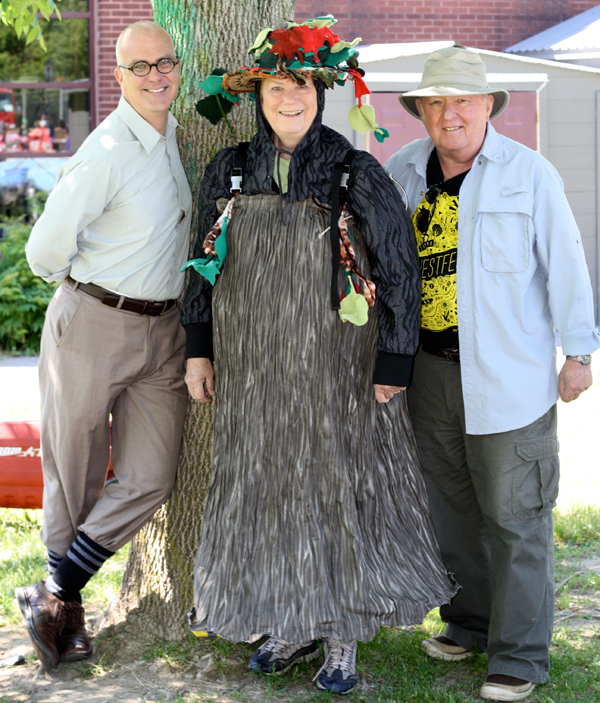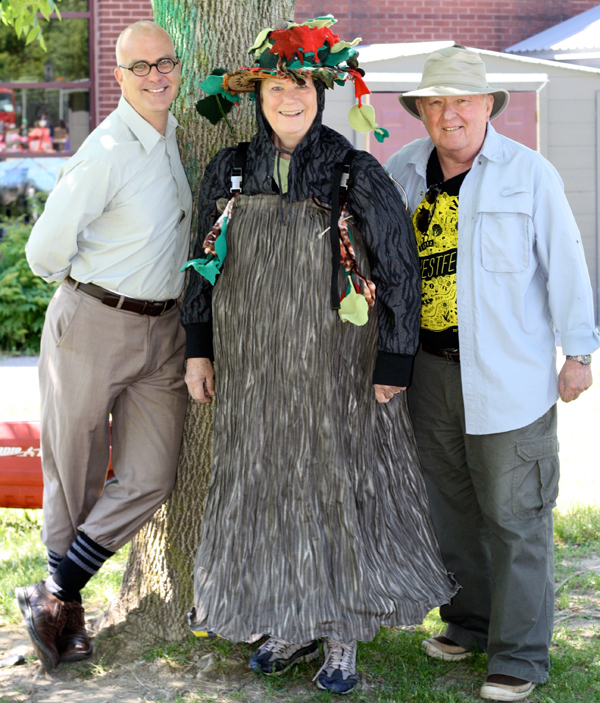By Anita Grace –
With the whir of chainsaws and the grind of a wood shredder, another tall tree disappears. The extensive loss of mature trees across the ward is worrying many residents.
“It’s pretty alarming to suddenly see these big gaps in our forest canopy and parks,” says Daniel Buckles, a Champlain Park area resident and active tree conservationist. “It’s surprising and shocking to see these trees gone.”

“One of the characteristics that makes Kitchissippi so attractive is the mature tree canopy,” says Deb Chapman, a Clare Gardens area resident. “To walk under the canopy of a mature tree is just spectacular.”
But there are far fewer mature trees in Kitchissippi now compared to recent years. The City of Ottawa has removed 450 ash trees in this ward alone. Across the city, over 15,000 dead or dying ash trees have been removed. Another 60,000 ash trees will likely be cut down in the coming years. Additionally, the National Capital Commission is cutting down over 12,000 ash trees on their properties.
“Between 25 and 30 per cent of Ottawa trees were ash trees,” says Buckles. “That made our forest vulnerable.”
The Emerald Ash Borer is a wood-boring beetle that feeds under the bark of ash trees. An ash tree can lose half its branches in a year due to these invasive insects, and the entire tree usually dies within three years of being infected. The City has treated some ash trees with injections of insecticide that has been proven effective in controlling Emerald Ash Borer. However, the majority of ash trees in the city have been cut down.
Buckles hopes that as the City replaces the lost ash trees, they will do so with a diversity of locally-sourced and sustainable trees.
In fact, the City of Ottawa has been replacing ash trees with trees that vary in species, height and life span. For example, they are planting fruit and nut trees like crab apple, serviceberry, hackberry, hazelnut, and black walnut, as well as gingkoes, honey locusts, chanticleer pears and various types of maples trees.
“We love what City Forestry is doing,” says Jay Garlough, a volunteer with Hidden Harvest, a non-profit organization that harvests fruit and nuts to distribute to places like the Parkdale Food Centre.
He is particularly excited about the Turkish hazelnut trees, describing them as “beautiful big trees that deliver delicious food – more than enough to share with the squirrels.” Though they are not native to Ottawa, they do well in this climate and in urban environments. Garlough notes that since many ash trees were growing near roadways, their replacements need to be tolerant of exhaust and salt.
People may wonder why the city is not choosing apple or pear trees to replace the ash. Garlough explains that fruit trees are quite small in comparison to the ash. They cannot provide the same environmental benefits that large trees can – such as shade, and storm water and pollution absorption
Councillor Jeff Leiper is impressed with how the City Forestry department has been replacing lost trees. He notes that while they have cut down 450 trees in Kitchissippi, they have already planted 570 here.
“They are very cognizant [about using] local, native species and locally grown seeds,” he says. “But they are also thinking about climate change and are sourcing seeds with a more southern origin as well.”
Still, it will take years for the newly planted trees to offer the green canopy and environmental benefits of the lost mature trees. And as many Kitchissippi residents know, the Emerald Ash Borer is not the only threat to local mature trees.
“So many trees are being taken down by developers,” says Jean McKibbon, a Westboro Community Association representative on a city-wide committee that is working to protect the urban green canopy.
Development projects in Kitchissippi and other urban wards have taken a toll on hundreds of mature trees. Even when trees are left standing, the roots are often badly damaged and are covered with stone dust, sand and gravel, leaving little hope that the tree will survive.
Deb Chapman urges all concerned residents to be involved in protecting local trees, such as by alerting the City of trees that are being threatened by development projects. “If people really want Kitchissippi to stay the glorious mature tree-filled neighbourhood that we enjoy now, more residents need to get involved.”
“Let’s not repeat old mistakes,” adds Buckles. “Let’s ensure real diversity.”
To find out more and get involved, visit TreeOttawa.org, or contact your local community association.
